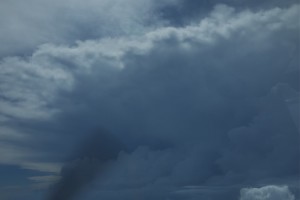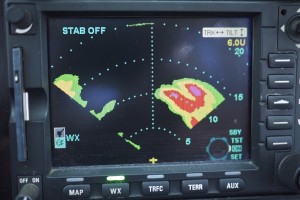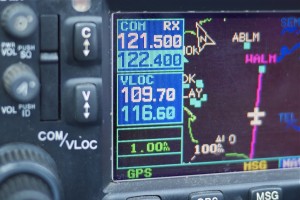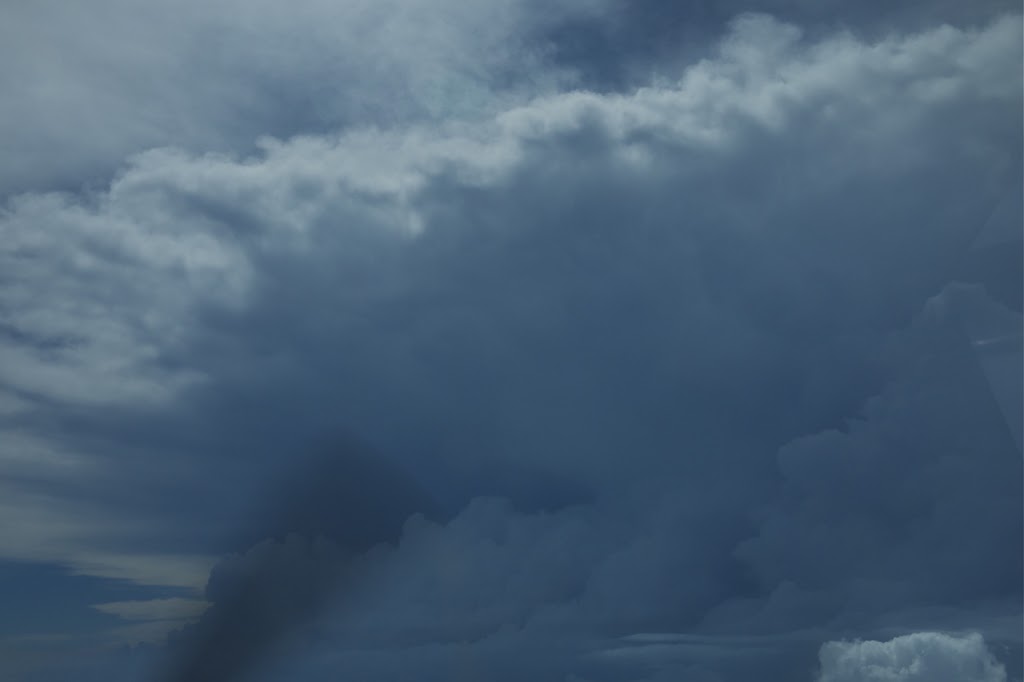After last week’s continual drizzle and multi-layered clouds I was pleasantly surprised to see some sunshine this morning. However, that tends to mean only one thing out here during wet season. Thunderstorms. And bang on cue, from about mid-morning onwards the build-ups began.
 |
| Typical build up out in Indonesia |
The Porter’s not especially nice to fly near CBs. With its high-lift wing, you tend to get thrown around a fair bit (much more so than in the Cessna Caravan which could shrug off all but the more nasty looking cells). What’s that I hear you say? Fly around near a CB? Well yes, sometimes there’s just no other option, as they can build up right next to each other and your destination can be other the other side of a line of them.
The best way to get through is to use a combination of the mk. 1 eyeball along with the weather radar to pick a path in-between the cells. Now, the weather radar can only “see” water droplets. That tends to mean that whilst a storm is building, there’s actually very little return shown on the radar screen. This is however the worst sort of cloud to go near, as there’s some serious upwards movement inside them. Luckily, the mk. 1 eyeball is pretty good at spotting these with their hard, white edges and large vertical movements. Best avoided really.
 |
| Weather radar returns from a couple of nearby cells |
There are however times when it wouldn’t be sensible to attempt to cut a passage through. If you’ve got enough fuel you can go the long way around or you’ll just have to head back home. Oh and try to avoid flying through red/purple returns as you’ll get pretty wet with that amount of water pushing it’s way through the Porter’s rather poor door seals.
The other trouble with unstable days like today is that it can be a little bit turbulent for the passengers. Most of the passengers I fly out here are fairly used to using small aircraft to get around but even so, some really don’t have the stomach for it when it gets bumpy. ALWAYS make sure you have a ready supply of barf-bags in the aircraft within visible and easy reach of the passengers. Cleaning it up when it’s found it’s way into the seat rails is not fun. And with the heat out here, the smell can really linger.
Like most pilots, I tend to have 121.5MHz tuned in on my second radio when I don’t need both active. For those who don’t know, 121.5MHz is the international distress frequency. You can use it to talk and it’s also the frequency ELTs (Emergency Locator Transmitters) transmit on. When an aircraft is involved in an accident, the ELT will activate and transmit a noise which anyone who’s tuned into 121.5MHz can hear. The idea is you can then home in on it’s location using special equipment or search and rescue techniques.
 |
| Picking up a transmission on 121.5MHz |
So, what do I hear today as I’m heading back towards Malinau? Yup, an ELT. Normal procedure is to inform ATC (Air Traffic Control) so they can investigate to determine if it’s a real emergency situation or whether it’s just a faulty one coming from an aircraft nearby. However, the trouble with ATC in Indonesia is that most operators can’t speak fluent English. Which means, if you go off their script, they don’t understand you. Me trying to explain an ELT is going off was totally off the script. I even tried to explain in Indonesian (mine’s not too bad) but she didn’t seem to know what an ELT was. Worrying.
Anyway, once on the ground I phoned a friend of mine who works for Tarakan ATC (Tarakan’s the main airport up here in North Kalimantan). Luckily he can speak fluent English and does know what an ELT is. It turns out it was just a faulty one from another aircraft, so not an emergency. Whew!
Discover more from Matt Dearden
Subscribe to get the latest posts to your email.
